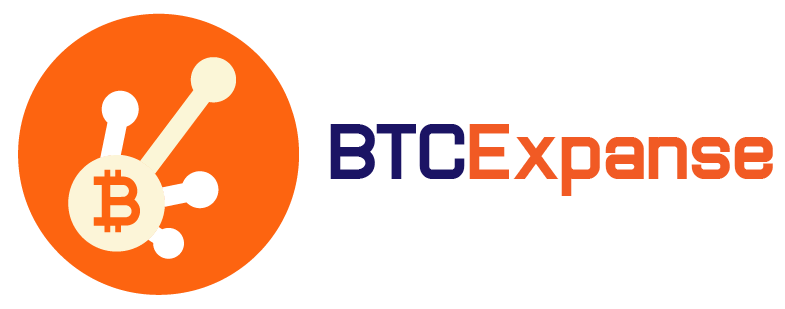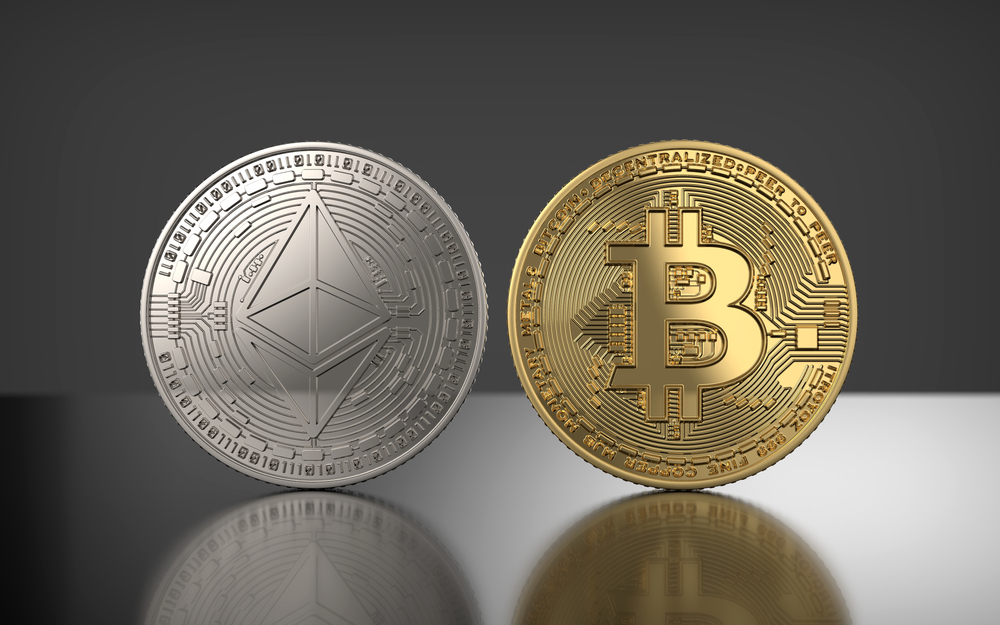Most of the tokens in the cryptocurrency market have their Wrapped version. For example, Wrapped Ethereum (WETH) and Wrapped Bitcoin (WBTC) are available on many crypto exchanges. These tokens are termed Wrapped Tokens.
Wrapped Tokens are just like any other cryptocurrency, but they’re on another blockchain as compared to their parent token’s blockchain.
Wrapped Tokens exist in the crypto space to ensure easy interoperability. This way, we can make tokens work on multiple blockchains, even if those blockchains don’t natively support that token.
In this guide, we’ll take a deep look into Wrapped Tokens and will see how they work.
Introduction to Wrapped Tokens
Wrapped Tokens are different versions of a cryptocurrency and exist to make the cryptocurrency compatible with other blockchains. For example: Wrapped Bitcoin is a special version of Bitcoin and can help make Bitcoin compatible with other blockchains. The same is the case with Ethereum and any other cryptocurrency with a wrapped version.
The same logic applies to stablecoins as well. For example, Tether USD, or USDT, is just like a wrapped version of fiat USD and is introduced to make USD compatible with the decentralized blockchain system.
The same is the case with Wrapped Tokens. Every blockchain differs from other blockchains. When a cryptocurrency is unable to work on a blockchain, a wrapped version of the same cryptocurrency is made, and hence the cryptocurrency is made compatible with the blockchain.
Another name for Wrapped Tokens is ERC-20 tokens. This is a protocol, as well as a representative of the original token. ERC is a short form of “Ethereum Request for Comment.”
Originally, Wrapped Tokens were introduced on the ETH blockchain.
This technology allows the conversion of ETH tokens into Wrapped ETH (WETH). This makes Ethereum much more functional across multiple blockchains.
WETH was also developed to help the dApps (Decentralized Applications) incompatible with ETH and to make them compatible. With the introduction of this feature, users are now able to convert their regular ETH tokens into ERC-20 tokens.
Working Mechanism of Wrapped Tokens
To create Wrapped Tokens, there must be a parent token or custodian available. This way, the value of the Wrapped Token, as well as its custodian, can be made equal. Custodians can include smart contracts, specific wallets, and DAOs.
Smart contracts are specific codes that are used to execute and regulate certain activities on a blockchain. These activities include transactions and various services. DAO is just like a smart contract and is a decentralized and fully autonomous organization that is used to execute automated commands on a blockchain.
Wallets with multiple digital signatures are signed by their owners, and they ensure the best level of security on the blockchain.
A custodian has to hold the original token and release a wrapped version of the same token on the blockchain. The wrapping process takes place with the help of the minting process.
After their creation, Wrapped Tokens are sent to the target blockchain on which they’re supposed to work.
The ratio of original and Wrapped Tokens is always 1:1. So, one token will create one Wrapped Token, and ten tokens will create ten Wrapped Tokens.
After their work is done, Wrapped Tokens can also be unwrapped, and the original form of this token can be restored. The custodian “burns” these tokens, and the burning process is the exact opposite of the minting process.
After burning the Wrapped Token and converting it back into the original token, it is transferred back to its original blockchain. The value of the original and Wrapped Token remains the same during the minting and burning process.
Wrapping a token means making it compatible with other blockchains and making it fully supported there.
What is Wrapped Bitcoin?
Bitcoin (BTC) is incompatible with the Ethereum blockchain. However, the ETH blockchain has many more features as compared to the Bitcoin blockchain. So, anyone with Bitcoins can create Wrapped Bitcoins and use them on the Ethereum Blockchain to enjoy the functionality of the ETH blockchain.
Some of the biggest uses of WBTC on the ETH blockchain include its use in dApps (decentralized applications) and the DeFi (decentralized finance) sector.
WBTC was first introduced and launched in 2019 by Ren, BitGo, and Kyber Network combined. By the end of 2020, around 140,000 Bitcoins were minted and wrapped to make them workable on the ETH blockchain.
Instead of first buying/ mining Bitcoin and then minting them into Wrapped Bitcoin, you can also directly buy Wrapped Bitcoin and use it for whatever purpose you want. You’ll have to use a MetaMask wallet to buy WBTC.
MetaMask Wallet works directly with the ETH Blockchain.
In addition to helping you with the purchase of WBTH, the wallet can help you keep your digital assets safe by keeping your private keys safe. You can also use the wallet to exchange WBTC and many other tokens in a completely decentralized system.
We’ve already discussed WBTC and WETH. However, there are many other tokens with their wrapped form in addition to these two tokens. To be successfully wrapped, the token needs to be compatible with the ERC-20 standard.
Let’s take a look at some other examples of popular Wrapped Tokens.
OmiseGo/ OMG Network
One of the biggest reasons behind the creation of OMG tokens is to boost the efficiency of the Ethereum blockchain by lowering the gas fees significantly. To make the OMG network functional, lots of USDT have been released on it.
Increased efficiency of the Ethereum blockchain with the help of the OMG network ensures fast and reliable transactions. So, OMG is one of the most popular and essential ERC-20 tokens on the Ethereum blockchain.
BAT/ Basic Attention Token
Basic attention token is another popular ERC-20 talking on the Ethereum blockchain. The main reason behind the creation of BAT tokens was to solve advertising-related issues on the internet. Whenever someone gives feedback on the internet, they can earn BAT tokens as appreciation.
So, advertisers can use BAT tokens in their advertisements to get more engagement and enhance user activity on advertisements.
In addition to being available on the Ethereum blockchain, Wrapped Tokens are compatible with many other blockchains as well. For example, Wrapped Tokens like WBTC and WETH are compatible with the Binance Smart Chain as well.
To be compatible with the Binance Smart Chain, Wrapped Tokens must be compliant with BEP-20 token standards. Binance Bridge allows the wrapping of traditional cryptocurrencies and helps users launch their crypto in the secure and stable Binance Smart Chain. This makes crypto transactions and yield farming a lot easier.
However, users should keep in mind that the minting and burning process to wrap and unwrap cryptocurrencies is not free of cost. Both of these processes take some gas fees in return. However, when you are using the Binance Smart Chain, you have the luxury of paying very low gas fees as compared to other blockchains.
Binance Smart Chain currently supports Wrapped Tokens like WBTC, WETH, WDOT, and many others.
Wrapped Tokens: Benefits and Drawbacks
Just like any other cryptocurrency token, wrapped tokens have their benefits and drawbacks. To clear your concepts about wrapped tokens and their pros and cons, we have provided a list of benefits and drawbacks below. Let’s take a quick look.
Benefits of Wrapped Tokens
Interoperability
Interoperability is one of the biggest advantages of Wrapped Tokens. While it was not possible a few years back, users can now use their Bitcoin conveniently on the Ethereum blockchain and enjoy all the benefits of the Ethereum blockchain without actually buying Ethereum tokens.
You can use wrapped tokens to conduct transactions on the Ethereum blockchain and can also use them to build decentralized applications.
Liquidity
An increase in liquidity is one of the biggest benefits of wrapped tokens these days. For example, by significantly decreasing the gas fees, wrapped tokens can increase the liquidity of cryptocurrencies like Bitcoin and Ethereum.
Whether a cryptocurrency is centralized or decentralized, wrapped tokens can help increase its liquidity by making it interoperable on different blockchains.
Fast Transactions
Fast transactions are another huge benefit of wrapped tokens. For example, buying or selling Bitcoin on its parent blockchain can take a lot of time since the process is really slow. On the other hand, if you are buying wrapped Bitcoin on the Ethereum blockchain, the process will be much faster.
Since the value of cryptocurrencies changes abruptly every second, time is of great value in the crypto world, and you should never compromise on the speed of transactions.
Better Security
Since the private keys of wrapped tokens are in your hands, they can provide much better security as compared to their original counterparts. The custodians also provide their services on the most secure cryptocurrency wallets and exchanges, making the process even better and more secure.
Low Transaction Fees
Low transaction fees are another great benefit of wrapped tokens. Since wrapped tokens are just like smart contracts on the Ethereum blockchain, they are very liquid and provide fast transactions along with low transaction fees.
Drawbacks of Wrapped Tokens
Role of Custodians
While wrapped tokens are still making great changes to their structure, they still rely on custodians to be minted and burned. If the security or functionality of the custodian is at risk, the wrapped tokens will also be at risk.
Centralization
The main reason for the popularity of cryptocurrencies is because of their decentralized nature. However, since wrapped tokens rely on a custodian to be issued, they can potentially be centralized. Even the top minds in the cryptocurrency space have admitted that wrapped tokens have the potential to be centralized since they rely on a centralized process to be created.
For example, the keys of all the wrapped tokens of a cryptocurrency on the Ethereum blockchain are held by custodians. This is where the centralization factor comes in. The centralization is caused by the reliance of wrapped tokens on custodians to be minted and burned, as they aren’t created directly on a decentralized blockchain.
Minting Process
The minting process is not free and is another disadvantage of wrapped tokens. Both wrapping and unwrapping require the user to pay gas fees which causes slippage.
However, we can easily conclude that the benefits of wrapped tokens far outweigh their drawbacks.
Moreover, a lot of development work is being done on wrapped tokens, and the experts are trying to remove the disadvantages of wrapped tokens soon. The crypto marketplace is trying to replace custodians with a decentralized application. Whenever that happens, we will be able to make wrapped tokens just as safe and secure as their regular counterparts.
Use Cases of Wrapped Tokens
Let’s take a good look at the development opportunities which come with wrapped tokens.
Traditional Assets
We can use wrapped tokens as a digital alternative to traditional assets. For example, traditional assets like stocks and real estate can be wrapped and represented on the blockchain. This will help make investing in these assets a lot easier and more accessible for investors from around the globe.
Stablecoins
Stablecoins can also be converted into wrapped tokens with the help of custodians. Stablecoins are a form of cryptocurrency that is pegged to fiat currencies. Their value remains stable and maintains a ratio of 1:1 with the fiat currency they’re pegged to.
With the help of wrapped stablecoins, we can create many new investment opportunities by creating financial instruments.
Cryptocurrencies
As we’ve already discussed above, wrapped tokens can also be used to represent cryptocurrencies like Ethereum, Bitcoin, and Polkadot. This helps enhance the liquidity and functionality of these tokens on the Ethereum blockchain and creates new opportunities for developers who want to implement these wrapped coins in DeFi apps.
NFTs
Just like many other digital assets, NFTs can also be wrapped. Non-Fungible tokens are used to represent physical or digital assets. Wrapped NFTs can be used on many new platforms, and their functionality can be enhanced immensely.
Commodities
Commodities like Silver and Gold can also be represented on the blockchain in the form of wrapped tokens. This makes trading those commodities possible on cryptocurrency exchanges rather than in traditional, centralized markets.
Popular Wrapped Tokens
Let’s take a look at some of the best-wrapped tokens on the decentralized finance marketplace.
Wrapped Bitcoin (WBTC)
WBTC, as we already know, is a wrapped version of Bitcoin on the Ethereum blockchain. It is created by minting Bitcoin on the ETH Blockchain with the help of a custodian.
WBTC has the same value as BTC and can be traded, sold, or used in decentralized finance applications on the blockchain.
Wrapped XRP (WXRP)
The wrapped representation of XRP on the ETH Blockchain is termed Wrapped XRP or WXRP.
Users can mint WXRP on the Ethereum blockchain and use it to trade, sell, or use it in their decentralized applications.
Wrapped Stablecoins (WSTABLE)
Wrapped Stablecoins are the Wrapped version of a stablecoin like USDT on the blockchain. You can use WSTABLE in regular applications with enhanced liquidity. You can also trade them like regular stablecoins and get the same value as their original counterparts.
Wrapped Gold (WGLD)
Although Gold is a commodity, it can also be represented on the Ethereum blockchain in the form of Wrapped Gold (WGLD). WGLD can be used like traditional Gold bonds and is mostly used to store value in the form of Gold on the ETH blockchain.
Conclusion
We can easily conclude that there are lots of benefits that wrapped tokens provide in addition to the benefits provided by traditional cryptocurrencies. Moreover, these tokens have made cryptocurrencies much more functional, liquid, and usable by introducing them on the Ethereum blockchain.
Decentralized applications can benefit immensely from the availability of different types of cryptocurrencies on the Ethereum blockchain in the form of wrapped tokens. This is why wrapped tokens are widely used on the Ethereum blockchain and has the power to transform the future of cryptocurrency. Currently, wrapped tokens are quickly increasing in volume on the Ethereum blockchain, and their future looks bright.
However, there are still a few issues with wrapped coupons that need to be addressed before they are considered completely safe and secure. For example, the current minting and burning process relies on custodians, which can be used to make the process a bit centralized.
However, the functionality of cryptocurrencies relies on them being completely decentralized. So, by introducing decentralized custodians, the existing drawbacks of wrapped tokens can be eliminated, and they can be made a perfect choice for cryptocurrency investors and developers alike.
Since wrapped tokens are used to increase the efficiency of a cryptocurrency, they must be used by crypto investors around the globe. They offer much safer and faster transactions and with loot transaction costs. Moreover, whenever you want to restore the original cryptocurrency, you can unwrap/ burn the wrapped token to get your original cryptocurrency back.






























